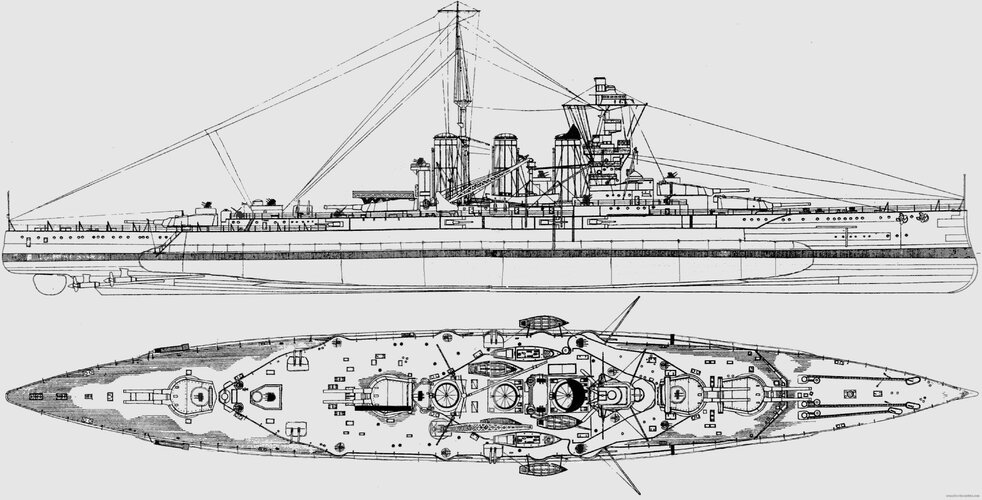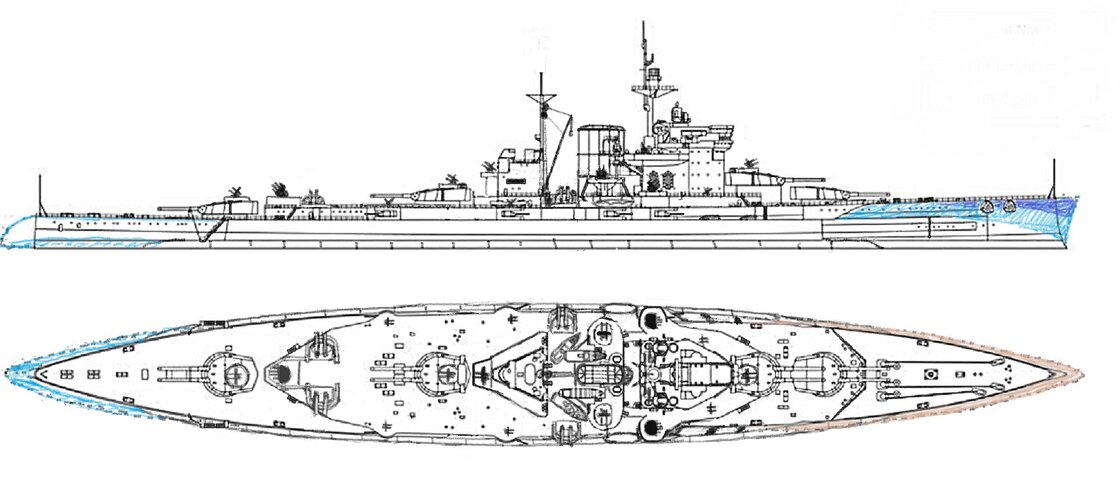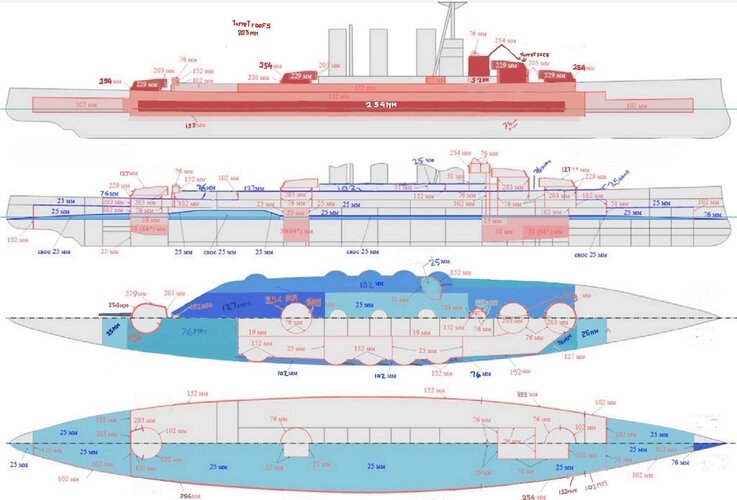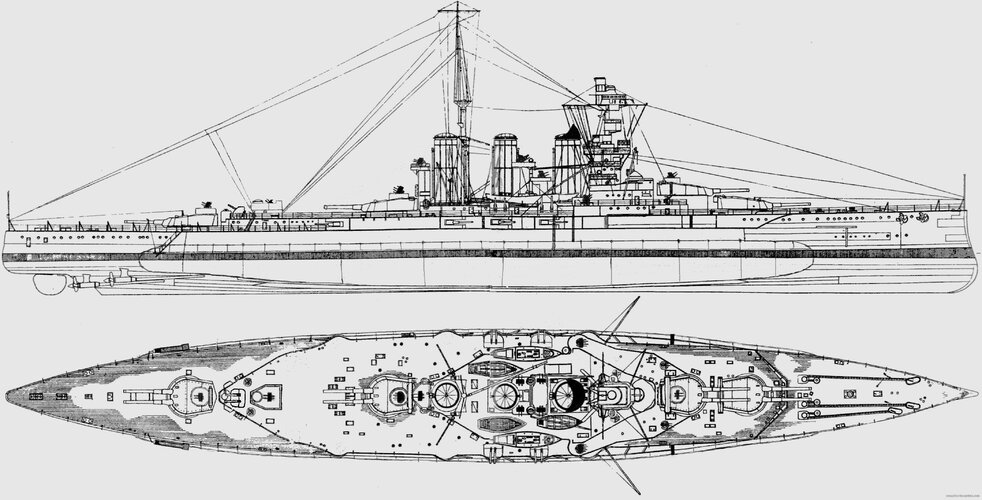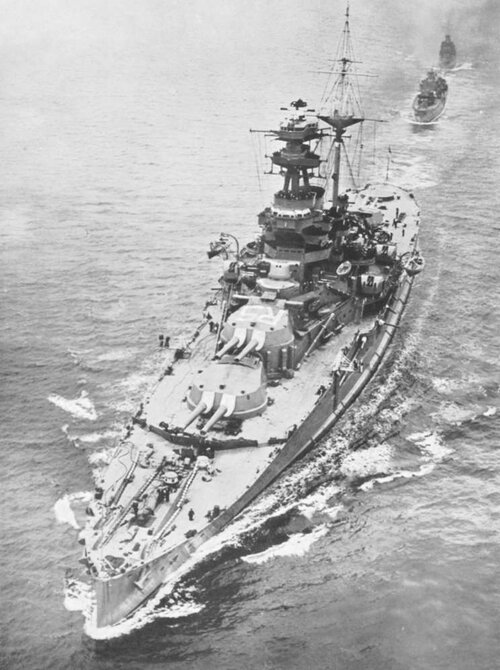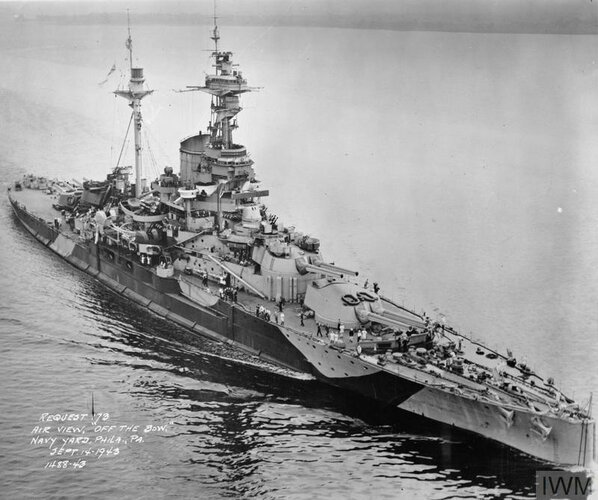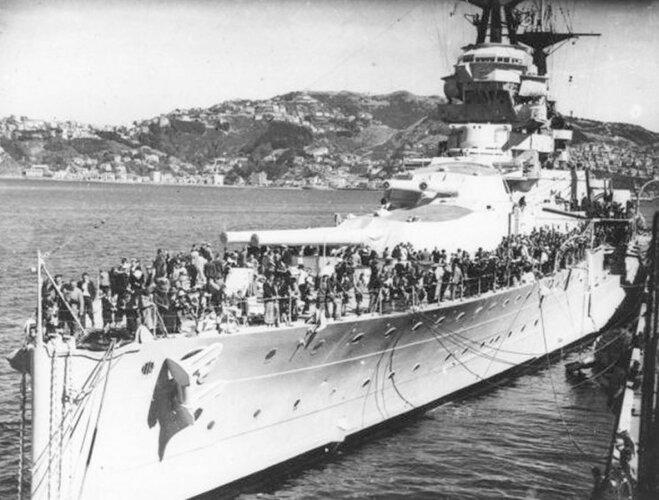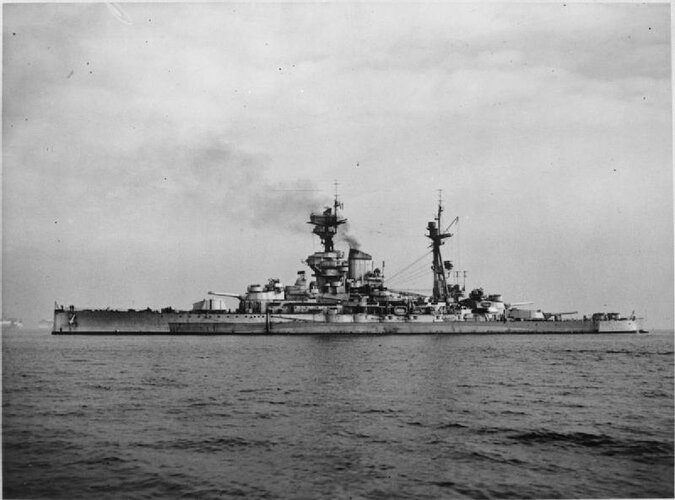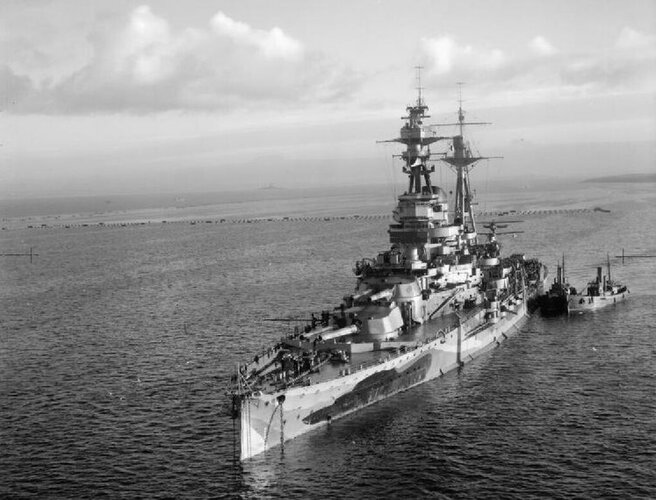Sure, ok; so, I scribbled something of a crane and catapult on the sketch I have; it is related to the HMS Barham's system set-up; it's for those who would have seen a float plane on the HMS Tiger in this theorical 1930s' refit.As far as I can tell from naval history, Zoeafr, that does seem to be the general case in the Second World War: USN warships, whatever their age, were kept well maintained, with even terrible battle damage repaired to like-new condition, sometimes again and again, while RN warships became increasingly dingy and battered. For example tough old HMS Warspite, which never did steer quite right after enduring fifteen 283mm and 305mm shell hits at Jutland, was famously "repaired" in Scotland after the 16 September 1943 Fritz-X guided bomb hit by having concrete poured to cover the hole blasted in her bottom, with her damaged boiler room and third turret left permanently abandoned. This general wartime difference was not due to RN preference or to any lack of fight. Comparing both countries after they entered the war (the UK two years earlier) and were fully mobilized, the USA had much greater manufacturing capacity than the UK, including in shipyards. And the UK's smaller population, with slightly more casualties than the USA suffered, was already unable in 1944-45 to provide enough young men to hard-fighting British Army divisions; therefore ship's crews had to be curbed. The British wrung everything out of their fleet (and then some) to ensure victory: a necessary, and honorable, decision.
But to keep this thread tight, let's stay focused here on battlecruiser HMS Tiger, please.
See if that makes sense. I'm personally still not convinced about the catapult option, but there are some here who think it would be necessary; so have a look and give me some opinions. Oh, just a detail, the Fairy seaplane weighed in at roughly 6000 lbs empty. the arm on this sketch would have to be about 65 to 70 feet long, so the crane would have to be a 15 to 20 ton crane, its mounting, plus mounting of the catapult and tank, and gaz, plus a small workshop set-up inside for basic maintenance and repairs, leading to an added weight of about 60 to 70 tons...Something to consider....

